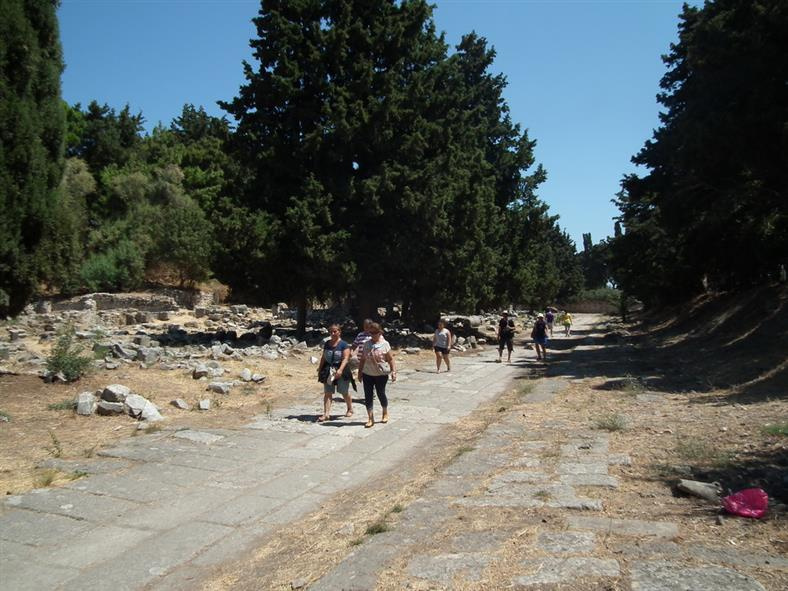
The western archaeological zone is located opposite the ancient theater and is part of the town that was abandoned in the Middle Ages and throughout the period of Hospitaller, and, when it was later excavated, it revealed some of the most important structures of Kos. The monuments found there are:
- Harbor Thermes: From the technique of the masonry we can understand that they were built around the 3rd century BC. They consist of a circular hall with arcades, the walls of which are lined with pierced bricks for heating, while under the vaulted spaces, probably ovens were installed. Later, in the summer of 1936, ruins with mosaics were found west of Thermes.
- The northern Thermes: Dated from the 3rd century BC, it is a building with a long hall that was crashed down and fills the floor in several places. It is likely that the northern and western Thermes were built next to a Gymnasium of the Hellenistic era, as evidenced by inscriptions, but the exact position of the Gymnasium has not been verified.
- The Stadium: Belongs to the first half of the 2nd century BC, and is located in front of the chapel of St. Anne. It was found that the length of Stadium could not been over 180 meters and the width was about 30 meters. The construction began in 4th-3rd century BC and has Doric and Ionic architectural elements.
- "Ksiston" or "Ksistos Dromos (Road)" of the Gymnasium: It belongs to the first half of the 2nd century BC and is located south of the Stadium. In 1938 from the remains of the Gymnasium of Kos, there were found 17 columns made of Kos white marble. It was later found that the length of the school was 180 meters and the width 90 meters and had an open atrium. The architecture of Ksisto of the Western Gymnasium of Kos has all the features that made the city of Kos rivaling with splendor all the capitals of the new kingdoms of the Hellenistic East, since we encounter great detail in the work of the buildings of Kos.
- Western Baths: They are located between the portico of the Gymnasium and the paved road and date from the 3rd century AD. It is a building trapezoidal in shape, with length of 92 meters and width of 35 meters to the north and 33 meters to the south. Later, after the earthquake of 469 AD, a part was turned into an early Christian basilica. On the side, at the northern end of the surface of the excavations there is a room, whose floor is adorned with one of the largest mosaics of Kos.
- The paved road (Cardo): The road is dated from the 3rd century AD. It retained almost complete the floor of large slabs made mostly from amygdalopetra and there are still evident the grooves made by the wheels of the vehicles of that era.
- Limestone arcade: It is dated between 4th and 3rd century BC and is located east of the paved road. The destination of the portico is unknown since there were later added walls during the Roman period.
- The Forica of the Thermes or Nymphaeum: It was excavated in 1938 and restored in 1940. It is made with cast masonry and belongs in the late 3rd century AD. The decoration was probably consisted of statues and water jets. The floor of the courtyard that had a well at the center, alternates with blocks of marble and mosaics with geometric shapes. The impressive building suffered significant damages in the earthquake of 469 AD.
- The road with the arcades (Decumanus): It has width of 10.50 meters, 4,45 of which were the road. The floor plates were made from amygdalopetra, prasinopetra or greenish limestone. The road was one of the arched streets, opened during the imperial period mainly in of Minor Asia and East Africa cities. But the architectural style belongs to the first decades of the 3rd century AD.
- The blocks of houses with mosaics and other finds: Traces of reconstruction (following the earthquake of 142 AD) of an earlier Hellenistic house, has a house with a central courtyard and a small toilet. There is interest in the technique of the wall constructions of this house and of the other houses of the district. The house "Mosaic of Europe" took its name from the mosaic of the 3rd AD that adorns the floor of a room. The paintings that adorn these houses are a lot.
Text Source: www.kos.gr
mysdf




